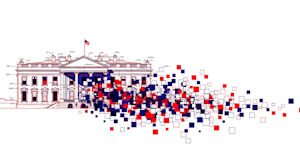SciPostLayoutTree: A Dataset for Structural Analysis of Scientific Posters
PositiveArtificial Intelligence
- The SciPostLayoutTree dataset has been introduced to enhance the structural analysis of scientific posters, comprising approximately 8,000 annotated posters that detail reading order and parent-child relationships. This initiative addresses a significant gap in research, as previous studies predominantly focused on academic papers rather than posters, which are crucial for visual communication in academia.
- This development is significant as it enables researchers and developers to create structure-aware interfaces that improve the understanding of research content presented in posters. By leveraging the dataset, tools like the Layout Tree Decoder can be developed to better interpret complex spatial relationships within the visual data.
- The introduction of SciPostLayoutTree aligns with ongoing efforts in the academic community to enhance visual scientific communication. It reflects a broader trend towards utilizing advanced machine learning techniques, such as sparse autoencoders, to analyze diverse scientific datasets, while also highlighting challenges faced by large language models in interpreting structured data effectively.
— via World Pulse Now AI Editorial System


